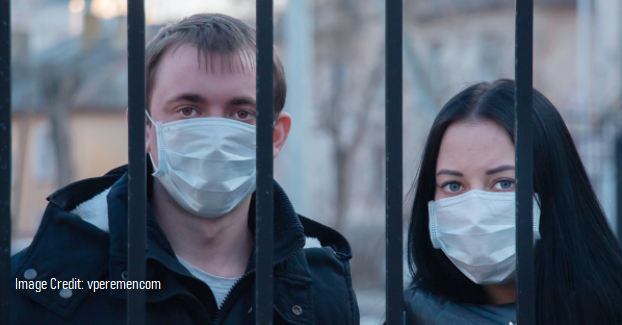We Just Got Even More Proof that Stay-At-Home Orders Lethally Backfired

A new study finds that lockdown orders didn’t reduce overall mortality, and may have even increased it.
WATCH: SENATE TESTIMONY: Child Suicide & Lethal Lockdown Consequences
Life under lockdown was hard for all of us. From economic destruction to social isolation, the costs of restrictive government policies intended to mitigate the spread of COVID-19 have been steep. But now, yet another study suggests that the benefits wrought by our collective sacrifice were negligible at best—and that stay-at-home orders may even have increased overall mortality.
In a new paper, economists from the University of Southern California and the RAND Corporation examined the effectiveness of “shelter-in-place” (SIP) mandates, aka stay-at-home orders, using data from 43 countries and all 50 US states. The experts analyze not just deaths from COVID-19, but “excess deaths,” a measure that compares overall deaths from all causes to a historical baseline.
The authors explain that lockdown orders may have had lethal unintended consequences in their own right, such as increased drug overdoses, worsened mental health problems, increased child abuse, deadly delays in non-COVID medical care, and more. So, to find out whether stay-at-home orders truly helped more than they hurt, examining excess deaths, not just pandemic outcomes, is key.
The results aren’t pretty.
“We fail to find that shelter-in-place policies saved lives,” the authors report. Indeed, they conclude that in the weeks following the implementation of these policies, excess mortality actually increases—even though it had typically been declining before the orders took effect. And across all countries, the study finds that a one-week increase in the length of stay-at-home policies corresponds with 2.7 more excess deaths per 100,000 people.
The lockdowns simply didn’t work.
“We failed to find that countries or U.S. states that implemented SIP policies earlier, and in which SIP policies had longer to operate, had lower excess deaths than countries/U.S. states that were slower to implement SIP policies,” the authors explain.
And their finding is no outlier. A number of other credible studies have similarly concluded that lockdowns were ineffective at slowing the spread of COVID-19. Plus, other research now shows that most COVID-19 spread occurred at home, not out in the world, making stay-at-home orders all the more absurd in hindsight.
Of course, there is tremendous resistance to acknowledging the fact that the sacrifice we all, to varying extents, endured evidently accomplished nothing—and may have even left us worse off. But we must acknowledge and grapple with this painful truth to ward off similar mistakes in the future.
The takeaway here is not just that stay-at-home orders are an ineffective public policy. It’s that politicians will always claim they can solve our problems if just given enough centralized power. But we must not fall for their rhetoric and focus only on the seen, tangible benefits of government action—like potentially slowing the spread of COVID-19—we must also consider the unseen and unexpected second-order effects and consequences.
EDITORS NOTE: This FEE column is republished with permission. ©All rights reserved.


Leave a Reply
Want to join the discussion?Feel free to contribute!